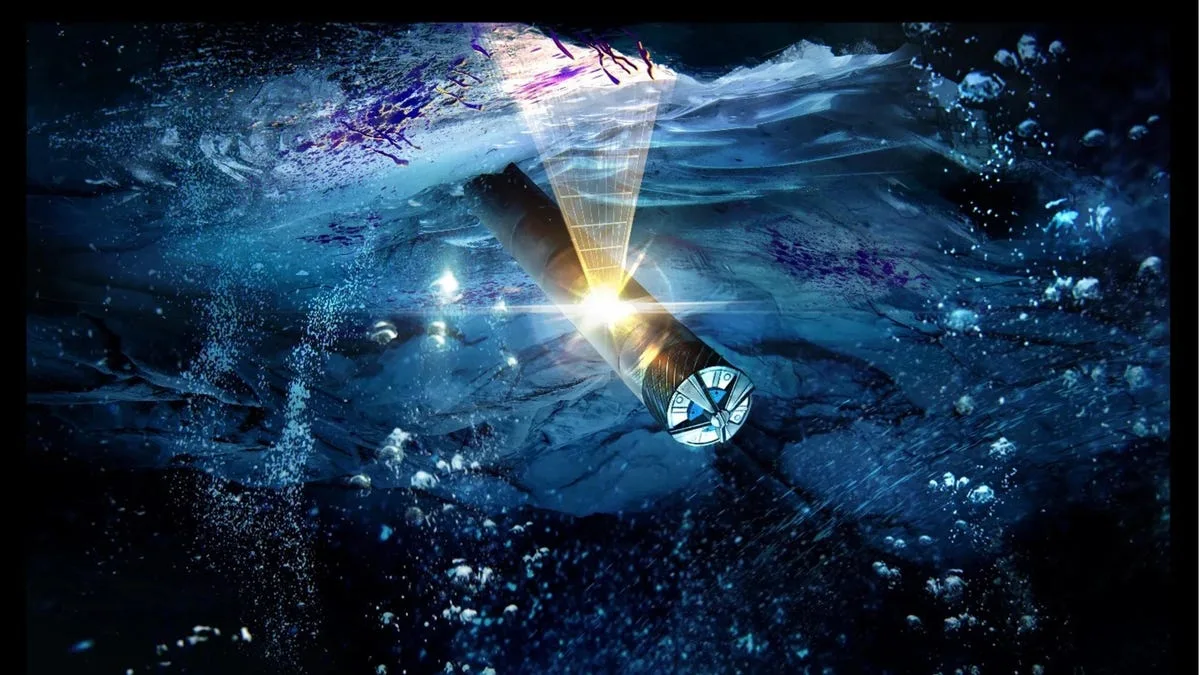Exploring Alien Oceans: The Hunt for Life Beyond Earth
The Promise of Liquid Water Worlds
Astrobiologists believe that there may be alien life in our solar system, hidden beneath the icy crusts of moons orbiting Jupiter and Saturn. These mysterious oceans, however, remain inaccessible to us. In order to overcome this obstacle, researchers have come together to design a groundbreaking mission that could finally reveal what lies beneath.
The Cryobot: Unlocking the Secrets
The proposed probe, known as a cryobot, is a cylindrical robot equipped with the ability to heat up ice and drill through it. This innovative technology would grant the cryobot access to the liquid water ocean hidden below the frozen surface. In February, over 40 researchers gathered at the California Institute of Technology to further develop this concept. The workshop focused on various aspects of the mission, including power, thermal control, mobility, and communication systems.
The Quest for Life Beyond Earth
The existence of extraterrestrial life is taken seriously by the scientific community. Space observatories like the Webb Space Telescope and the future Habitable Worlds Observatory are designed to gather data on exoplanets where alien life may thrive. However, these distant worlds are beyond our reach for direct exploration. Instead, scientists are directing their attention to locations within our own solar system where liquid water is likely to exist.
Unlocking the Secrets of Frozen Moons
The cryobot mission would entail a lander descending onto a frozen moon and deploying the cylindrical probe into the icy surface using hot-water drilling. To withstand the immense pressure of the deep ocean, the cryobot would be equipped with a 10-kilowatt nuclear power system protected by a specially designed structure.
Thermal management would play a crucial role in regulating internal temperatures and distributing heat efficiently throughout the system. Additionally, the cryobot would be equipped with a water jetting and cutting system to clear obstructions such as rocks, particulate matter, and salt trapped within the ice.
Overcoming Challenges
The workshop attendees stressed the need for hazard mitigation systems to be a top priority in future developments. Furthermore, the cryobot would require a reliable communication link to transmit data to a surface lander, which would in turn relay the information back to Earth. While fiber optic cables are commonly used, they are susceptible to disruption caused by movements in the ice shelf. Therefore, wireless communication methods such as radio, acoustic, and magnetic transceivers are being considered.
Target Moons: Europa and Enceladus
Jupiter’s moon Europa and Saturn’s moon Enceladus hold significant interest for astrobiologists. Both NASA and ESA have missions planned to explore Europa, and there is a mission concept in development for visiting Enceladus. NASA’s Europa Clipper is expected to launch in October 2024 and will provide valuable data for designing the cryobot probe, which will need to penetrate Europa’s frozen surface and gather information from its subsurface ocean.
The Enceladus Orbilander, on the other hand, will orbit and eventually land on Saturn’s moon to investigate the potential for life within its subsurface ocean. Earlier this year, scientists discovered evidence of phosphorus, a vital ingredient for life as we know it on Earth, being present in Enceladus’ water vapor plumes.
A Promising Mission Concept
In conclusion, the recent workshop participants determined that the cryobot mission concept is both scientifically compelling and feasible. It represents the most realistic near-term option for directly searching for life in an ocean world. While it will be years before a probe can successfully land on one of these icy moons, we are steadily approaching the exploration of alien oceans.
Source: NASA Shows Off Concept for an Alien-Hunting ‘Cryobot’ Probe






